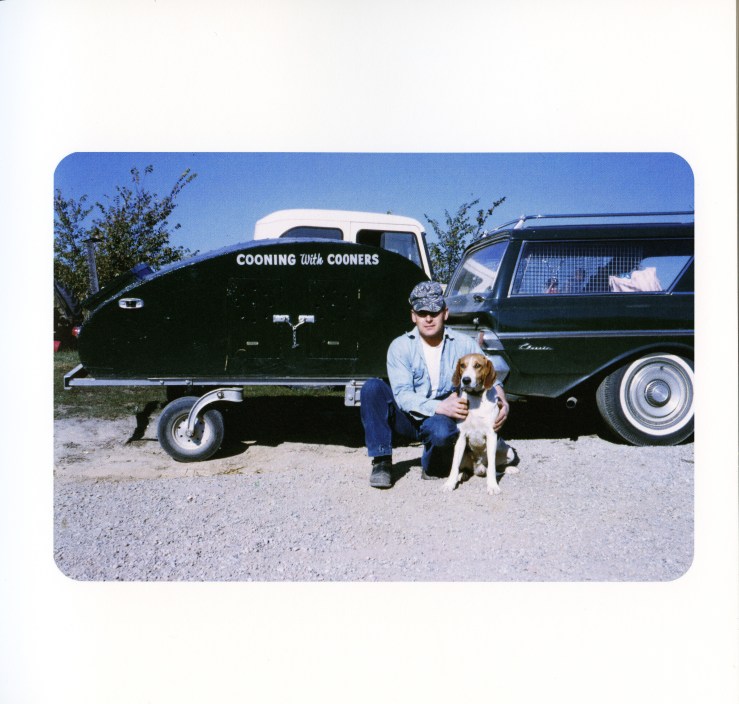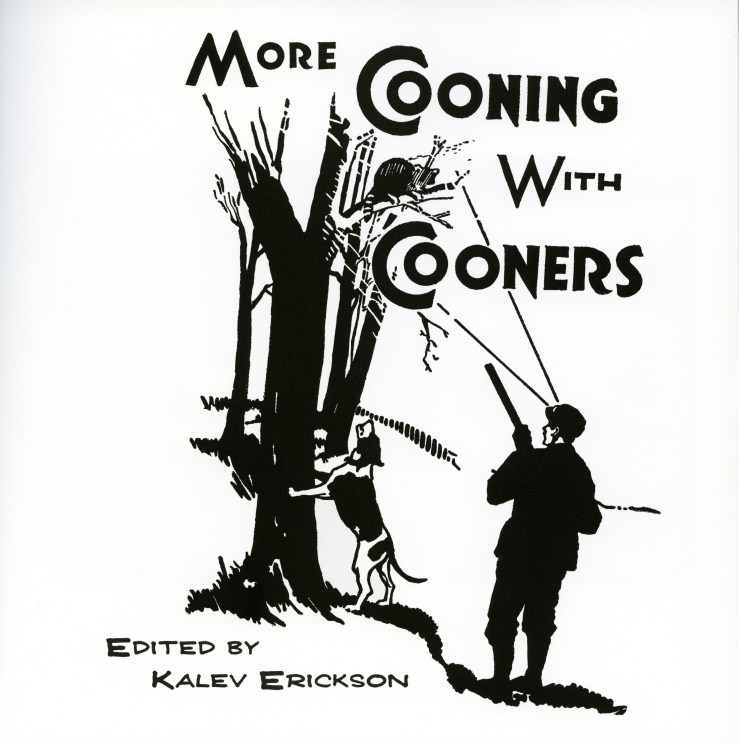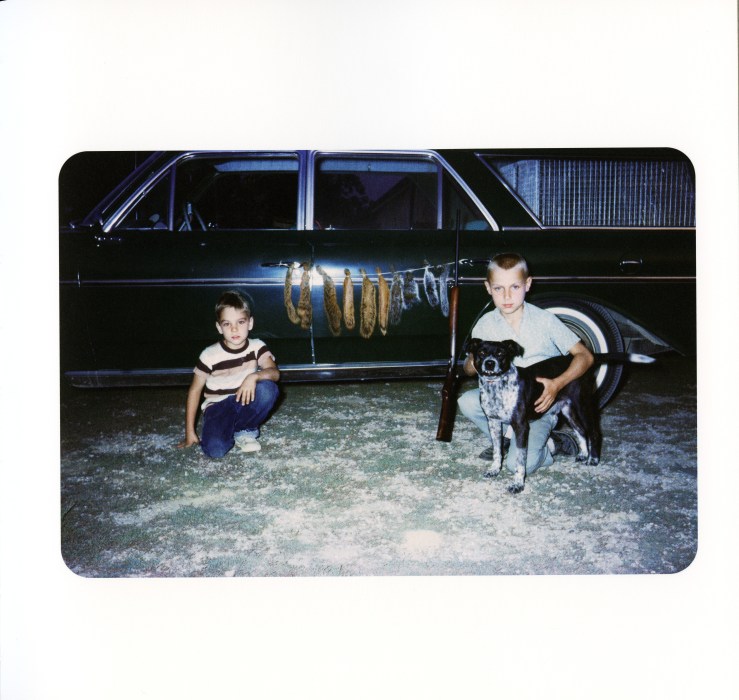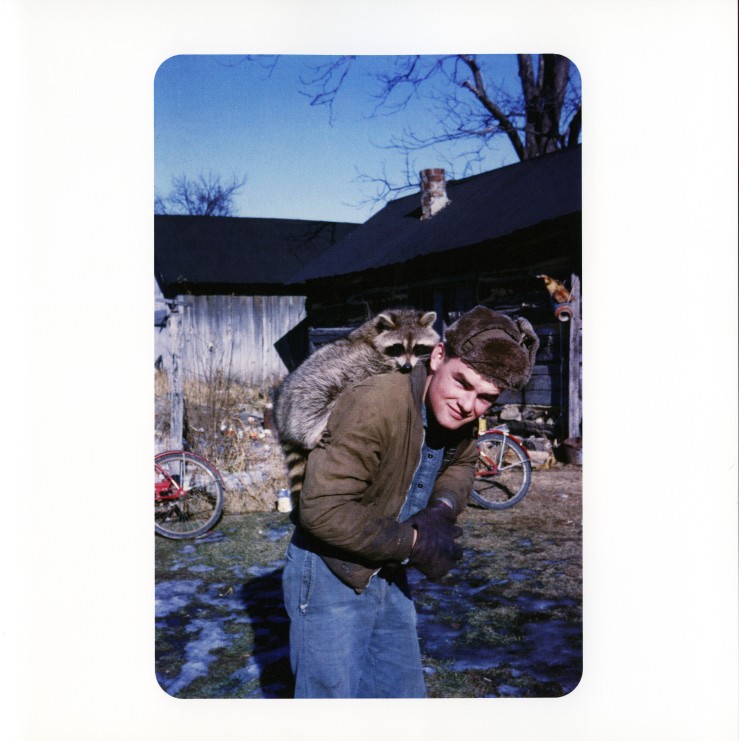 More Cooning with Cooners (edited by Kalev Erickson)
More Cooning with Cooners (edited by Kalev Erickson)
Archive Press, London (February 28, 2011)
ISBN: 0954709195
This is a 60-page book from the Archive of Modern Conflict (London) from earlier this year which I have only recently had a chance to examine more closely. It is a small square book (21 x 21 cm), well designed and intelligently sequenced, with a raccoon inspired silver and black cover. There is an exquisite illustration reproduced from a 1924 publication – Otto Kutchler’s Cooning with Cooners, from Hunter Trader Trapper (Ohio). This original book can be viewed and a pdf obtained here via the Open Library: http://openlibrary.org/works/OL7906924W/%27Cooning_with_%27cooners

The Archive of Modern Conflict book draws upon the 1920s Otto Kutchler book for inspiration but the real meat of the material is in the form of Kodachrome photographs from an anonymous Ohio family collection from the 1960s. Found family archives like this are often a powerful and compelling visual force and this is a book very much part of that tradition. AMC has produced great vernacular photographic collections in recent years: The Corinthians: A Kodachrome Slideshow (edited by Ed Jones and Timothy Prus) from 2008 which celebrated the ending of the Kodachrome process in 2009, and, the darkly intriguing Nein, Onkel: Snapshots From Another Front 1938-1945 (edited by Ed Jones and Timothy Prus) from 2007, featuring wartime snapashots from soldiers of the Nazi Third Reich.

More Cooning with Cooners is an intimate portrayal of the men and the dogs that hunt raccoons, depicting their lives and traditions. “They recount events from various rac[c]ooning adventures, and are the work of a single, but unknown, photographer with a clear enthusiasm for the hunt” – Kalev Erickson. Included in this collection there are portraits of men with their dogs, of which they are always proud, and also portraits with the raccoons themselves. Sometimes the raccoons are alive but more often than not the raccoons are dead and displayed either at the hunters feet or are hung up behind them displaying the entirety of the kills from a ‘coon Season’. There are even a few frantic action shots of the raccoon and the dogs in the midst of their action and there are the ever-popular portraits of children with their guns. Roughly half way through the book there is one lonely solitary contextual shot of a full moon. In many ways I wish we knew more about the life of this anonymous hunter and photographer, but then again I think we can safely surmise that we are in the presence of a good old boy. If just to emphasize this connection even more the vernacular poem “Dat Scanlus Coonhunt Itch” (1924) has been included on page thirteen.
In the short essay at the back of the book “The Art and Craft of Cooning” Prus and Jones expound on the hunt and the chase and the exotic nature of hunting “to the more cosmopolitan urban dweller”. Of course, to the New Yorker the raccoon is more than a familiar sight which may be seen wandering on to the stage of a Shakespeare in Central Park festival and stealing a scene or two or rummaging for gourmet food in City trash cans. The modern urban New York raccoon is quite a fearless creature and has become quite an epidemic in recent years. Whereas, to see a raccoon in the UK one would have to visit a zoo and view and observe the creature behind glass. My American friends seem to find it very amusing that raccoons are considered “zoo animals” in the UK. In New York the raccoon is already on the fire escape and I am sure they may soon prise open a window with their small human-like hands and shortly thereafter they may even be found in a library. I wonder what they will make of this book once they break in.
As a book we may find this a disturbing depiction of the good old boy life surrounded as he is with his guns and dogs and children with guns, but like many other books on vernacular photography the imagery is very real and authentic. It is as compelling as rubber necking. Just to add to the ‘good taste’ debate AMC offers a special edition of this book presented in a raccoon fur slipcase. Although I personally do not care too much about this fur issue I am certain that this book enrages the PETA folks out there. What I find far more problematic is that the word ‘coon’ as we all know has a second meaning that is racially offensive and the book’s essay does not address that at all and perhaps it should have done.
